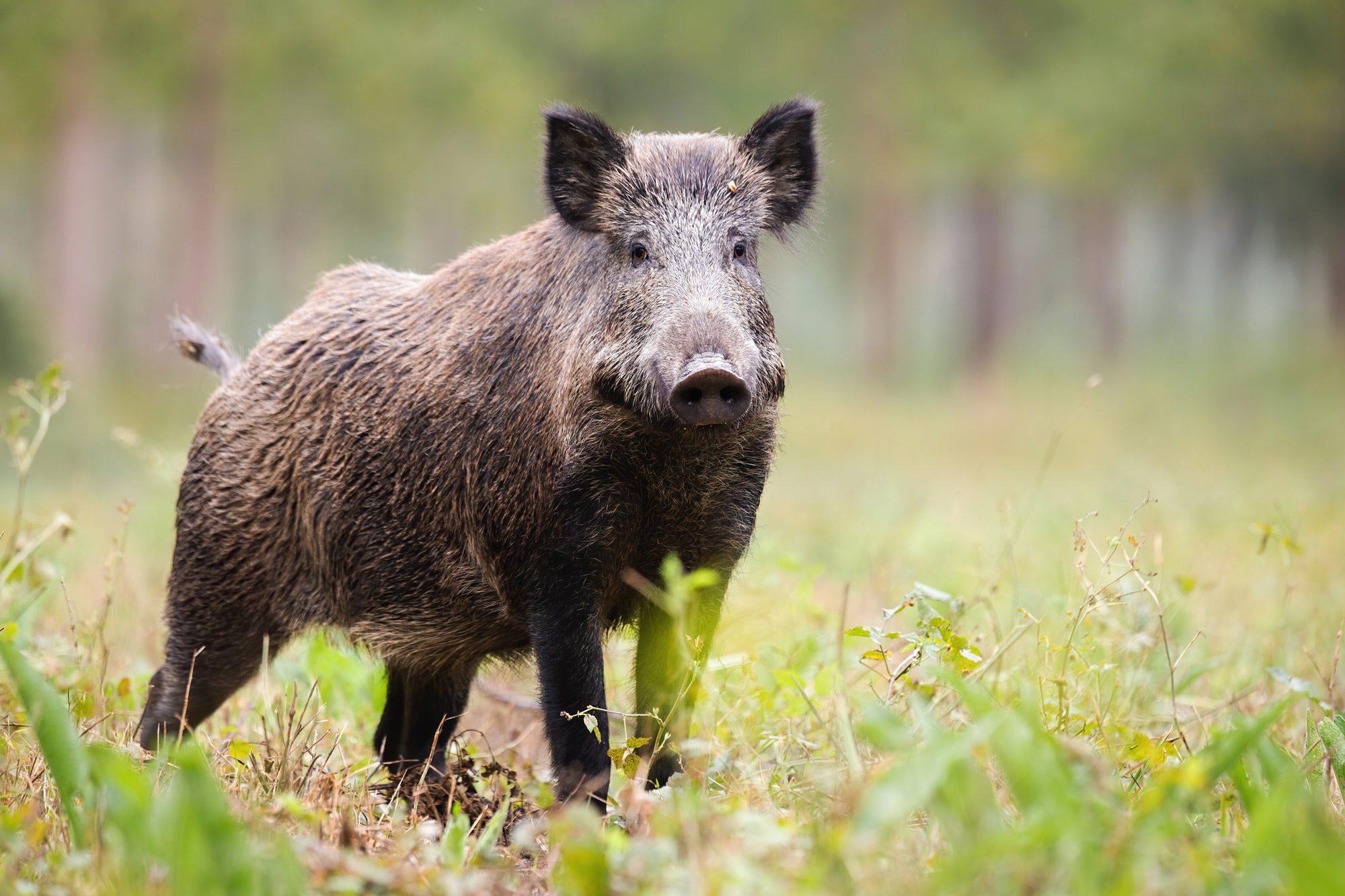Wild Boar
Wild boar, with their distinctive tusks and bristly coat, are a paradox in Alberta – both admired for their culinary value and yet criticized for their invasive nature and impact on native ecosystems. Originating from Europe, wild boar have firmly rooted themselves in Alberta, hybridizing with domestic pigs and causing serious ecological disturbances and challenges for land management.

More on Wild Boar
About
Wild boar (Sus scrofa) are sturdy, adaptable animals that can thrive in a variety of habitats, from dense forests to grasslands. Their versatility has contributed to their rapid spread and establishment in various parts of the world, including Alberta. Introduced for farming and hunting purposes, wild boar soon escaped confinement, establishing feral populations. Their rooting behaviour, wherein they dig up large swathes of land in search of food, results in significant damage to native habitats, crops, and can even threaten native species in Alberta.
History
While the history of wild boar in their native ranges spans millennia, in Alberta, their story is relatively recent. Introduced in the 1970s, they were initially seen as an economic opportunity for farming and hunting. However, as escapees established themselves in the wild, their rapid proliferation began to cause concern. Their ability to adapt and reproduce quickly combined with a lack of natural predators has made them a formidable invasive species. Their presence is now seen as a significant challenge for Alberta's land managers, farmers, and conservationists, and has gone so far as to yield a bounty from the provincial government for successful hunters.
Ways To Cook
On the culinary front, wild boar is a treat. Their meat is darker, leaner, and more flavourful than domestic pork, with a sweet, nutty, and robust taste that stands out in dishes. Boar can be grilled as chops, slow-roasted, or braised in hearty stews. Their ribs, when smoked or barbecued, are a delicacy. Ground boar meat is also sought after for sausages, burgers, or ragù. In Alberta, while efforts are ongoing to manage and reduce wild boar populations, they are also being harvested for their meat, turning an ecological problem into a gastronomic opportunity. Notably, restaurants and local markets that emphasize wild or local foods often feature wild boar, showcasing its versatility and rich flavour profile.
